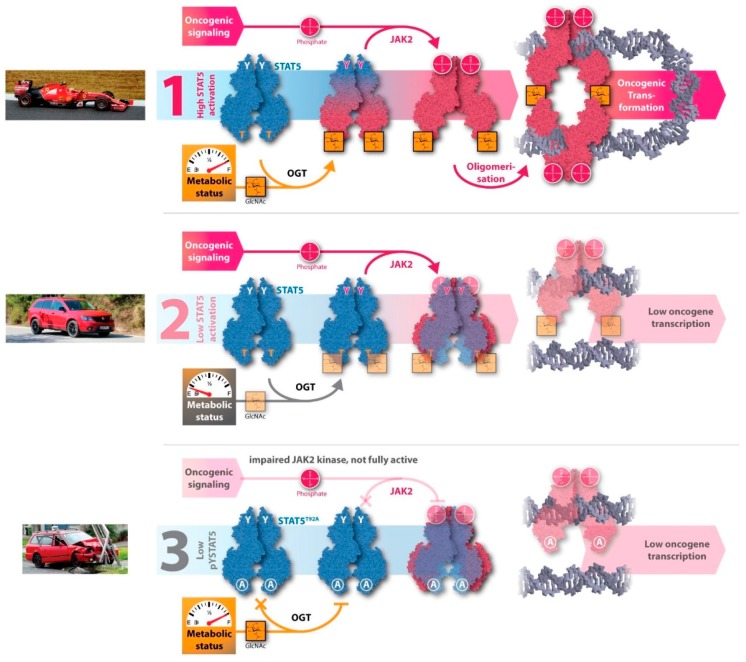Figure 3.
Inhibition of O-GlcNAcylation of oncogenic STAT5A. Three different modes of action explain oncogenic (1) or normal (2,3) function of STAT5A. A racecar, a family car, or a damaged car serve as a metaphor to illustrate oncogenic transcription processes. In the case of gain-of-function (GOF) mutated STAT5A and sufficient nutrient supply, then increased ‘power’ and a full ‘fuel tank’ allows oncogenic transformation to occur (1). In the case of low metabolic status, and therefore less ‘power’ (2), the cancer cells driven by oncogenic STAT5A cannot divide as they lack the ‘fuel’ required for important cellular processes. Independently from the metabolic status, blocking O-GlcNAcylation by mutation, illustrated by a damaged car, also lowers oncogenic transcription in the context of a GOF oncogenic variant of STAT5A (3). When the critical O-GlcNAcylation site is abolished by mutation, then transformation is lost, and cancer cells driven by oncogenic STAT5A revert to normal cell signaling [7].

